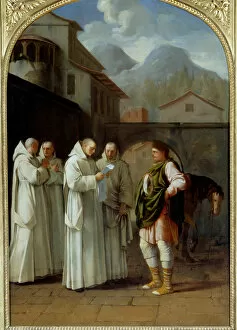Bruno Of Cologne Collection
Bruno of Cologne, a revered figure in religious history, is depicted through various artistic mediums that capture his profound impact and spiritual journey
All Professionally Made to Order for Quick Shipping
Bruno of Cologne, a revered figure in religious history, is depicted through various artistic mediums that capture his profound impact and spiritual journey. In "The Vision of Saint Bruno, " an oil painting on panel, we witness the ethereal moment when divine enlightenment bestowed upon him. The depth of his devotion is further showcased in "The Funeral of Raymond Diocres, " a poignant episode from his life portrayed with brush and brown ink washes. This artwork evokes emotions as we mourn alongside Bruno for the loss of his dear friend. "The Life of Saint Bruno" unfolds before our eyes in another masterpiece rendered on canvas. Here, we witness the solemnity surrounding his passing on October 6th, 1101—an event immortalized by the artist's skillful use of oil paints. A striking wood sculpture from 1634 captures Saint Bruno's austere yet compassionate countenance, reminding us of his unwavering commitment to faith. In one captivating scene titled "Saint Bruno (1030-1101), founder of the Carthusian Order receives a message from Pope, " we glimpse into a pivotal moment where he receives divine guidance to establish this renowned order dedicated to solitude and contemplation. Another painting from 1638 showcases Saint Bruno's serene visage—a testament to his inner peace amidst worldly chaos. Jean Bernard Restout's rendition in 1764 portrays St. Bruno with reverence and dignity while Claude Mellan's depiction highlights intricate details etched delicately onto paper—both paying homage to this remarkable saint. Finally, "Raymond Diocres Speaking During His Funeral" presents an emotionally charged scene illustrating how even during mourning, Saint Bruno continues inspiring others through shared stories and teachings. Through these diverse artworks spanning centuries, it becomes evident that Saint Bruno remains an enduring symbol of piety and introspection—a guiding light for those seeking solace within their own spiritual journeys.











